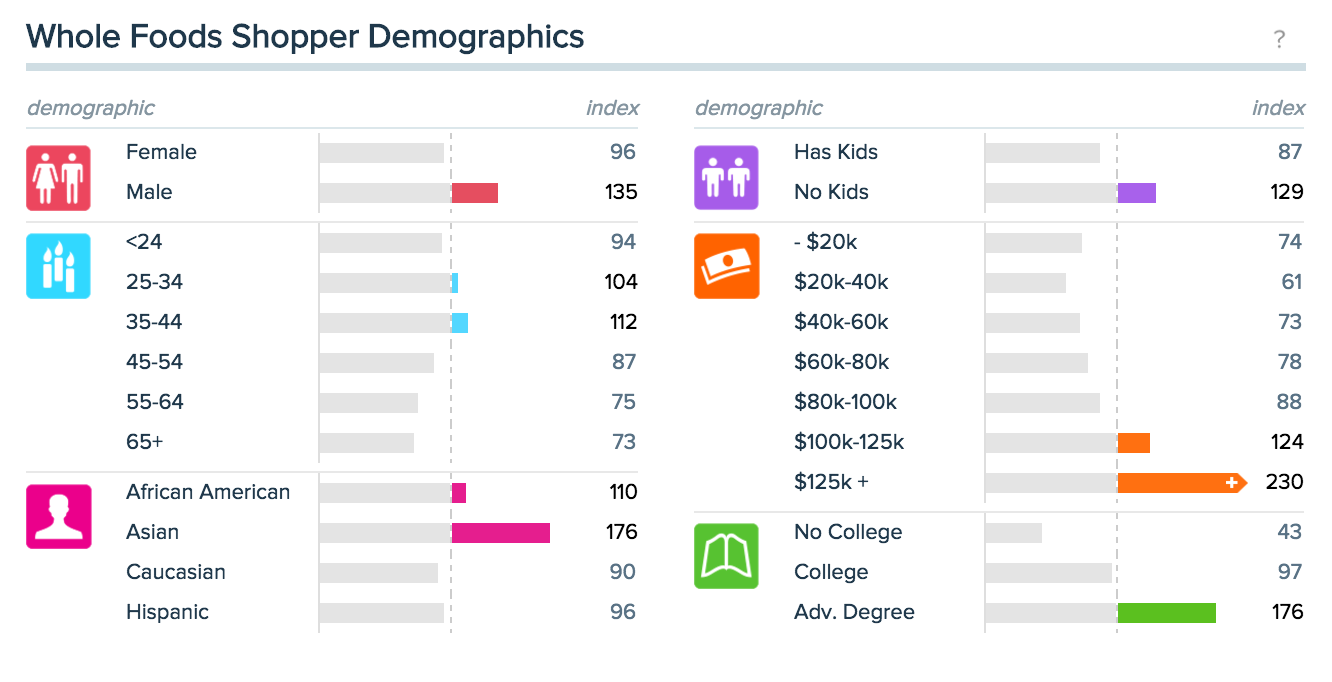Amazon is acquiring Whole Foods, but will you connect to their WiFi?
 Will you go online?
Will you go online?
There are countless hot takes on why Amazon is acquiring Whole Foods. Some experts believe that Whole Foods is merely another distribution channel for Amazon. Others are excited about drones urgently delivering kaleamole directly to your door step.
Having spent some time experimenting in the retail industry, I think the ultimate success or failure of this acquisition comes down to one simple question:
?Will customers connect to the Whole Foods WiFi??
Why WiFi?
WiFi is strategically important in this partnership because Amazon has made it clear they want to limit how you comparison shop in the store. One of the major sources of churn for retailers is that customers will look at the price, open up their phone and comparison shop. If they can find the item much cheaper either online or nearby, then customers are more likely to put it back onto the shelf and walk away. Limiting those cheaper search results will likely help reduce customer churn. This requires a connection to the WiFi, otherwise Amazon can?t easily control your search results.
As Amazon experiments more in retail, it makes sense that they also want to track your in store behavior to better understand your spending habits. This is much easier to do once you are connected to the Whole Foods WiFi. Many customers will likely not even know, since most of us scroll past that wall of text that is the WiFi Terms and Conditions. We are all too focused on the dopamine hit of pressing the connect button.
There are a few existing methods to track your physical movement without connecting directly to the in-store WiFi, that actually still leverage WiFi. For example, sensors can detect phones with WiFi simply enabled. Those WiFi enabled devices do not have to be connected to the in store WiFi, but since WiFi is turned on, they are actively scanning networks. This allow stores to track your positioning through carefully placed sensors within the store. You can also be uniquely identified by your phone?s MAC address using this method.
Why Retailers Usually Get This Wrong
These ideas around customer tracking and analysis are not necessarily new, but the execution of the ideas by retailers often leads to a frustrating customer experience.
- Retailers are not software first companies. They?ve bolted on digital and e-commerce businesses to their brick-and-mortar stores, usually at some point during the 1990?s. Much to their surprise, retail execs are now finding that the digital aspect of their business is now becoming a major revenue driver. This often leads to corporate in-fighting and a internal power struggle between the old guard executives and the typically younger, digital execs who want to push the company forward. This internal dysfunction usually plays out at the expense of us, the retail customer. For example, we finally download the app, but the items in the store are not in stock or have completely different prices.
- Customers with smartphones & tablets rarely want to connect to your WiFi. Connecting to the in store WiFi requires extra steps for the customer. WiFi hardware in stores is rarely stable or fast. This is because it?s usually an internal battle just to get it installed. WiFi is viewed as a non-revenue generating perk by execs, so managers install the cheapest hardware they can find. Only relatively younger, savvy smartphone users will take the time to even try to connect to the WiFi. If the WiFi isn?t any good, then they?ll never connect to it again.
- Older shoppers rarely use apps or WiFi. Many older customers do not have a smartphone or tablet. Instead they have feature phones without apps, or if they do have a smartphone, then they only use for voice calls & texting. It?s difficult to alter their shopping routine in a digital fashion, especially when they are never connecting to your WiFi or using your apps.
Why Amazon & Whole Foods Together, Might Get This Right
If Amazon and Whole Foods can play nicely in this new relationship, then there is a chance they can address each of these problems together:
- Amazon is a software first company. They were built on a foundation of digital experimentation and advanced analytics. They deploy code every 11.6 seconds. It remains to be seen how well this culture will translate over to Whole Foods brick-and-mortar stores. If Amazon can implement software successfully in the physical stores, then it will give them an obvious edge compared to other large, traditional grocery store chains who either cannot do this or will screw it up.
- WiFi can become a first class citizen. Now that Amazon is in the picture, you can bet that WiFi will be enhanced so that it isn?t as slow or cumbersome to connect to. I expect many marketing campaigns and incentives to get customers to connect to Whole Foods WiFi. Staff will be trained and people will be personally assisting you to connect to the WiFi. Asset management and in store devices that are throwing off data will not be DDoS?ing the in store WiFi, but will have separate communication channels so the connection speeds do not suffer.
- The customer experience will skew even more towards younger, tech savvy shoppers. Whole Foods is already tapped into the younger, mid-to-high income demographic. One of the challenges is that this demographic now opts for the local farmers market or farm-to-door sources for cheaper, organic food. Amazon and Whole Foods can however lure them back with better deals, provided they are willing to give up more information about themselves. The younger demographic is already familiar with this tradeoff and used to items they shop for on Amazon following them around the web. Rather than try to change habits of the older demographic who are not using apps anyway, Amazon can double down on the existing Whole Foods customer.
 source: http://infoscout.co/retailer/whole_foods
source: http://infoscout.co/retailer/whole_foods
What Does This Mean For Retail?
This impending acquisition is already sending shockwaves throughout the industry. Many physical store chains have never quite recovered from the last recession here in the United States. Personally, I don?t think many will survive another recession if they continue to operate business as usual. Amazon and Whole Foods together, could execute a new model that may help mitigate some of the upcoming retail apocalypse.
That is.. if you?ll connect to their WiFi.
If you would like to learn about the tools I use in retail experimentation, visit the Precoil library where you can access free lean startup and design thinking tools, templates and videos.


